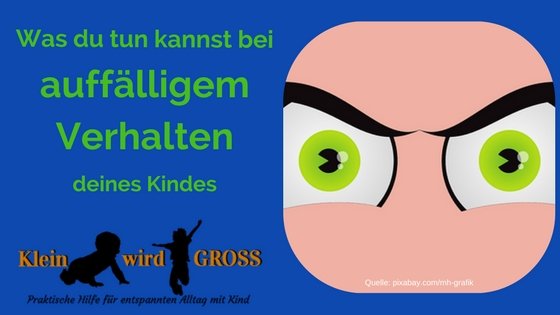If your child hits or bites other children – what is the reason and what can parents do about it? Pediatrician Dr. med. Nadine McGowan explains how to best deal with behavioral problems in children.
That’s what the pediatrician Dr. med. Nadine McGowan:
No aggressive behavior is practiced in the family, on the contrary – one tries to educate the children to be empathetic, helpful and friendly people. So how does it happen when a child shows aggressive behavior out of the blue? First of all, it is important to know that children only begin to understand the consequences of their behavior for others. For example, empathy in the real sense only begins to develop at the age of 18 months. From this point on, the child can differentiate between "self" and "other". Until then, for example, it will start to cry because another child is crying. But this is not because it reacts empathically, but because it cannot distinguish between external and self-perception.
When does a child experience compassion??
“Crying along” is therefore an unconscious transfer of feelings. This phase is followed by so-called self-centered empathy [1]. Here the child will show empathic behavior for the first time, but still very self-centered. For example, it consoles a crying friend in the daycare and gives him his own favorite cuddly toy – after this Motto: "What is good for me is also good for others". A child under three years of age does not yet understand that the friend may have a different need. Only around the age of 36 months a child can begin to put himself in another.

Up to the age of 18 months, children cannot distinguish external and self-perception Photo: Shutterstock
Why I do it all in connection with behavioral problems tell? Because it is important to understand that a child under 36 months, and especially under 24 months, still has no cognitive ability to put himself in another child and to anticipate and understand the effects of his (aggressive) actions.
Mostly, the aggressive actions are not an expression of real aggression against others, but rather that own Inadequacy: the child is angry because it is not yet able to do something as well as another child, may be tired and therefore irritable; depending on its age, it also cannot control its emotions. It has a low threshold of frustration.
In addition, the child may not yet be able to express himself well, except non-verbally. In a situation where the child feels cornered, the child has little choice but to respond by "hitting". Not that I am misunderstood: Of course, this is not adequate behavior and children have to learn what is appropriate instead. But from the child’s point of view, the way of acting is at least understandable if you put yourself in your position and your intellectual possibilities.
So what to do if the child has behavioral problems?
The younger the child, the more important it is to immediately discuss with the child what they did wrong and what such an action means for the other person. If you want to discuss with a two-year-old at the table in the evening why he shouldn’t bite his kindergarten friend, it won’t be very successful – because he can’t remember the situation.

Aggressive behavior should be discussed with your child directly in the situation in which it is happening – otherwise they cannot learn how to behave instead. Photo: imago
In this situation, discuss with your child what the child could have done instead: “If you want the mold, you have to ask and maybe play with someone else as long as your friend doesn’t want to give it up. If you blow him up, it hurts him. I don’t want you to hurt others. Just as I don’t want others to hurt you. "
There is no point in showing the child what he did by adding the same action (such as biting or hitting). It won’t be related. Your child learns the most from you lead appropriate behaviors. A child who grows up in a benevolent, loving, and empathetic environment is much more likely to show this behavior himself. So you are the strongest role model for your child. Be aware of that. And if the child does dance out of line? This is a very rare indication of a real problem of aggression. Put yourself in your child’s shoes, discuss the situation with them and how they should react instead.
[1] Hoffmann ML, Prosocial development: Implications for caring and justice. Cambridge University Press, New York 2000
RELATED ITEMS
-

Noticeable behavior in the child – what you can do about it – small becomes big
Are you familiar with that? A few weeks ago, everything was fine. Lately, however, you have been wondering what you did in raising your child…
-

The social behavior of children at school is a constant cause of concern for parents. While some children are wonderful in the group…
-

– Is my child stuttering? – Is my child stuttering? The parcel service rings at the door. Mom opens the door and takes a package. Tom storms excitedly…
-

Sleep disorders in babies – treat toddlers with Schüßler salts
Reading time: 4 minutes Parents react relatively helplessly if their child does not want to fall asleep in the evening. It is even worse for parents when their babies…
